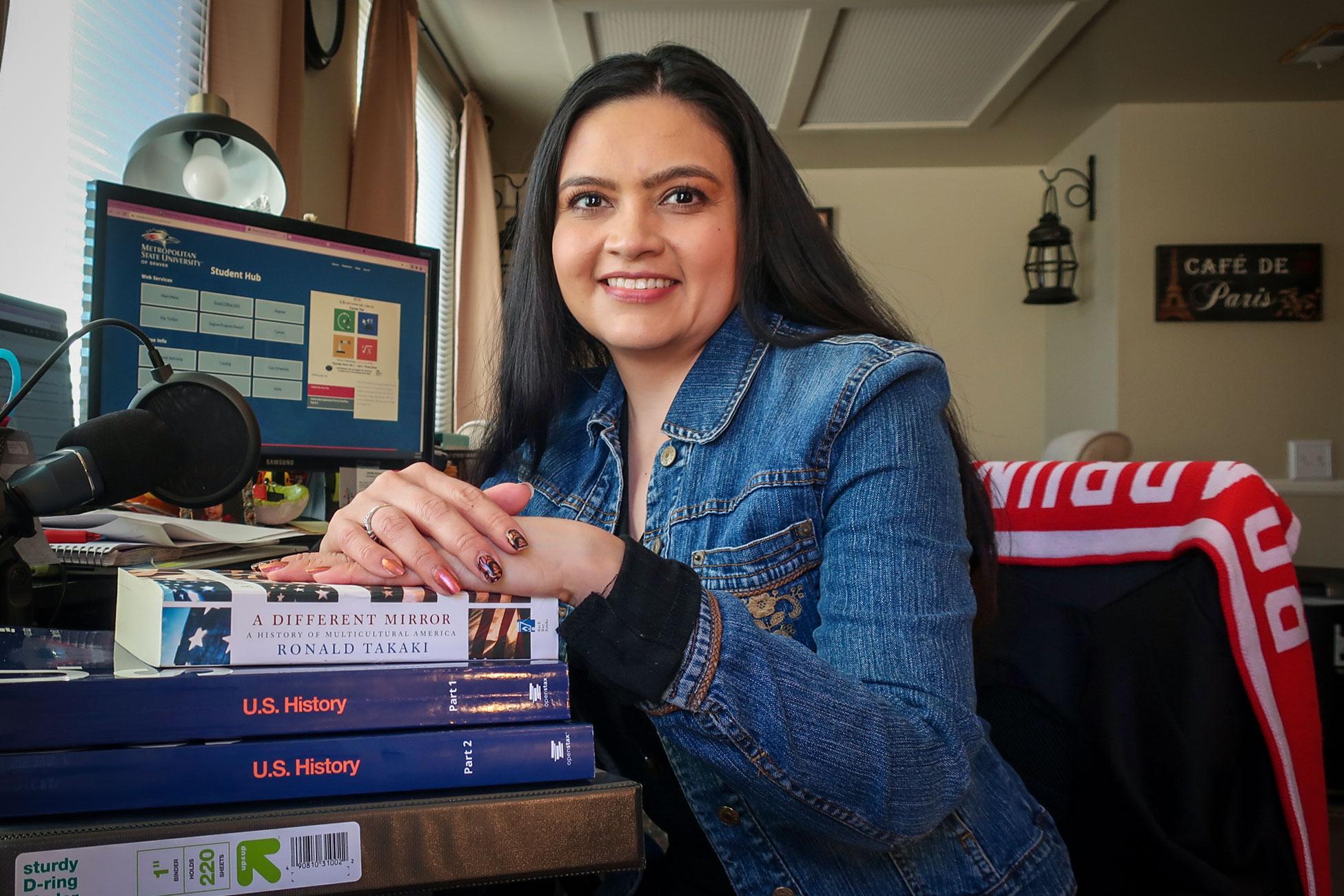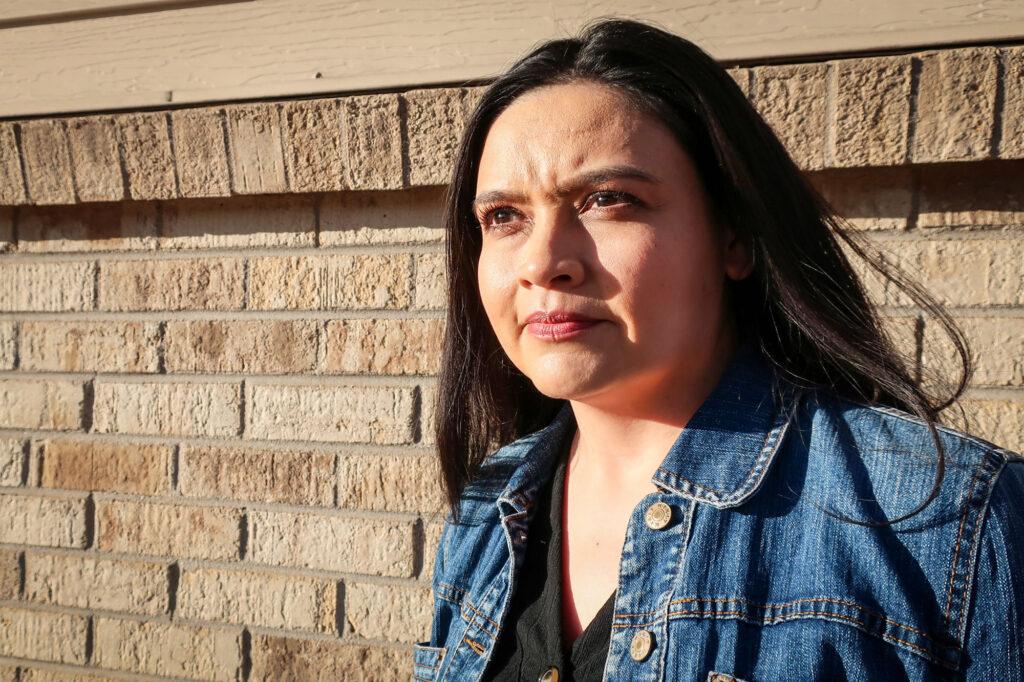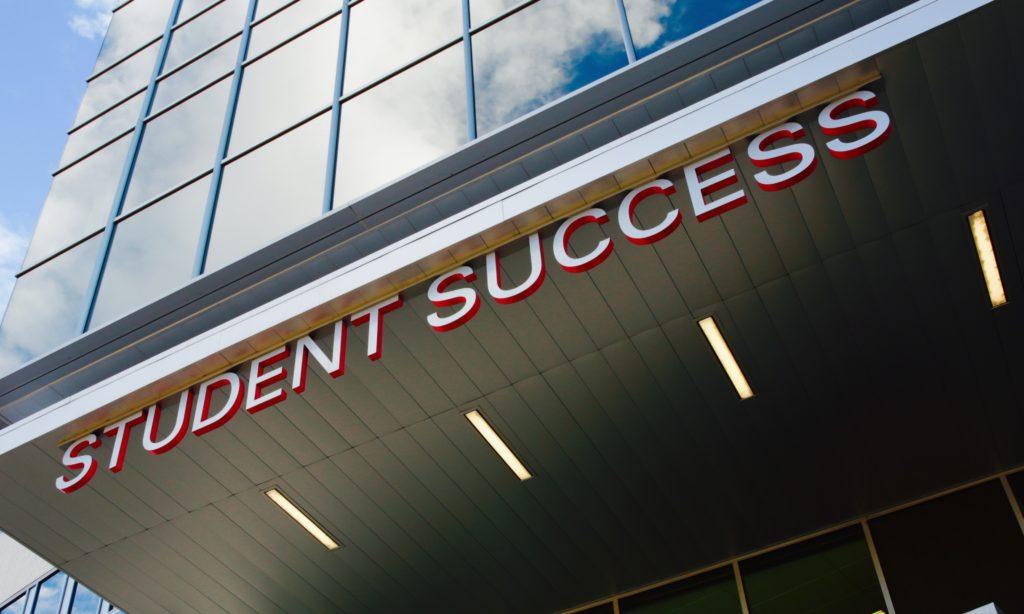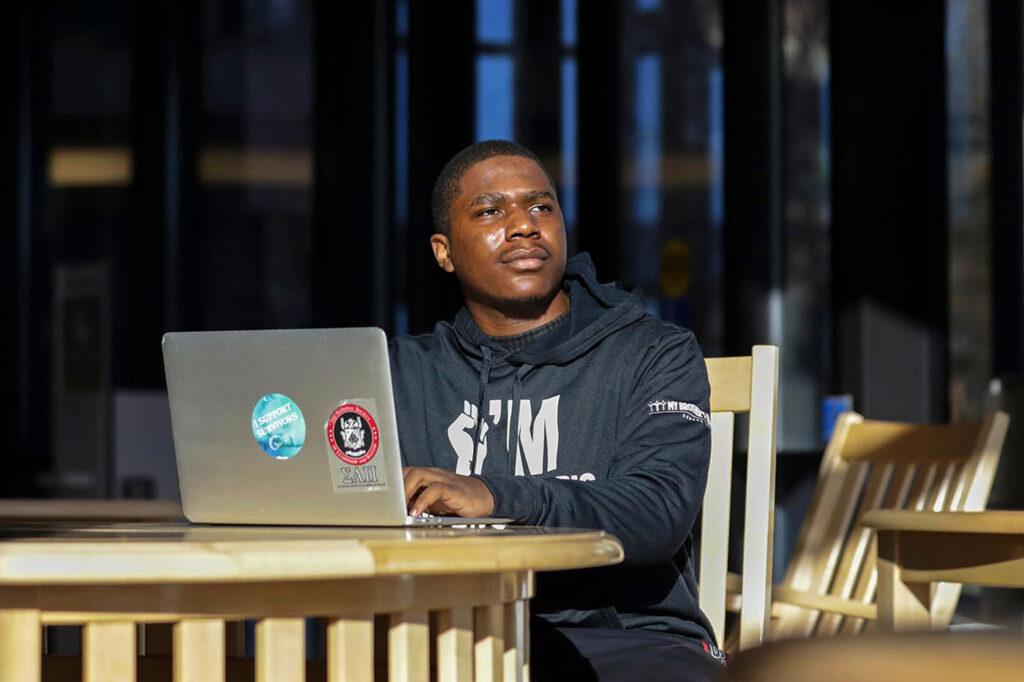
Jennifer Muñoz rises at 5:30 a.m., works a full-time job and then hits the books. In between cooking for her 12-year-old daughter, she studies for her bachelor’s degree. She was going to wait until her daughter was older to go back to school but the pandemic jolted her.
“You get your education, you get a better job, you get better housing, you get better healthcare,” said the 37-year-old.
Muñoz is all “A’s” so far in her second semester, working toward a social work degree. It hasn’t been easy. A peer mentor from Metropolitan State University Denver checks on her weekly.
“It helps me because I know that someone is listening and able and willing to help me when I get stuck,” she said. “I don’t feel like I’m alone figuring this out on my own.”
Without support from the college’s Access Center, which helped her get more time for math exams, Muñoz doesn’t think she would have lasted this long.
Peer mentors, advisors and other supports are crucial to helping underrepresented college students graduate. And some higher education officials worry that a sharp drop in enrollment among those students during the COVID-19 pandemic may mean that, without support, some of those students may never return.
That support costs money, however. This is why MSU Denver’s president Janine Davidson took a stand this year before the Colorado legislature’s powerful Joint Budget Committee.
Every year, all of Colorado’s colleges and universities sign a joint, unified letter to state lawmakers with a funding request.
This year, Metropolitan State University Denver — headed by Davidson — didn’t sign it. Instead, she said the university needs more money to help support underrepresented students earn their degrees. And she asked for $50 million over five years to do it.
“It simply became a moral issue for us,” Davidson recently told the committee. “We cannot sign on to a proposal that is going to support the status quo.”
For her, the way Colorado divvies up funding to colleges is inequitable. She said in 2020, MSU Denver received $4,547 in state funding per student compared to the 4-year institutional state average of nearly $8,000.

Past funding models built primarily on enrollment have created discrepancies in funding levels. That’s benefited schools with the highest enrollment like the University of Colorado and Colorado State University systems, but it also leaves MSU Denver with a $48 million base funding gap.
Davidson argued that the long-standing funding gap has hurt underserved students who make up the majority of MSU Denver’s student body. Davidson reeled off statistics: Forty-eight percent of students at MSU Denver are students of color. A striking 57 percent are the first in their family to go to college. Eighty percent work 30 to 40 hours a week alongside being a student in order to survive and pay off loans. More graduates from MSU Denver stay in Colorado to find jobs than any other college in the state.
These students also often require more tools and resources to graduate — like mentoring, internships, scholarship programs and advising. Providing that takes money and people to manage it. But, Davidson said, in the long run, it pays off.
“When you see the results where we’re able to provide those services, the retention and graduation rates are exponentially higher than the norm,” she said.
Part of Davidson’s idea is scaling up programs that support students who are vulnerable to dropping out.
MSU Denver student Emanuel Walker, 21, wants more funding for advisers and other student support because he said it can take “weeks'' to meet with one. The student to adviser ratio is 500 to 1 at MSU Denver. At other schools, 300 to 1 is the norm, and 150 to 1 is considered best practice.
“It’s heartbreaking,” said Walker, a computer information systems major. “There’s tons of talented young Black and brown students in the state of Colorado that just are missing that push that gets them into education and helping them find their purpose so they can be successful.”

Colorado created a new funding formula that goes into effect next fall. It will reward schools that educate students of color, first-generation students, those who are low-income and Coloradans. It also incentivizes schools for their graduation and retention rates.
Only 11 states have performance-based funding models that divvy up money to schools based on race, low-income status and how many underserved and at-risk students they serve, according to the National Conference of State Legislatures.
“This will benefit a school like Metro,” said Angie Paccione, executive director of the Colorado Department of Higher Education. “They just have to be patient.”
Paccione applauds MSU Denver for taking a stand but said all Colorado universities are struggling now. They’ve never recovered from the deep cuts of the past two recessions.
“Metro is not unique in saying ‘We’re not funded enough.’ No one is funded enough in higher ed right now. So, there’s no chance that the state would be able to give Metro $50 million in one year.” (MSU Denver’s request is for $50 million over five years.)
A report commissioned by the state last fall shows MSU Denver has the state’s biggest revenue gap compared to peer universities of roughly the same size around the country.
The report said the university would need a $64 million adjustment to be funded like peer universities.
“We’re so far behind, it’s like we’re not even on the ballfield,” Davidson said.
The youth advocacy group Young Invincibles said because of the way the factors in the new formula are calculated, it could take 20 to 30 years for colleges to see significant gains.
It and other advocacy groups have asked lawmakers to adjust the formula in a way that gets colleges money faster for the first generation, Pell grant-eligible and underrepresented minority students they’ve already enrolled. In a tight budget year, however, that could mean less money for other institutions.
Healthier Colorado’s Kyle Piccola said that since the beginning of the pandemic, many students of color, low-income students and those who are the first in their family to go to college are not enrolling in colleges.
“We want to help curb that as quickly as possible, and we think that if the [state legislature’s joint budget committee] makes this population a priority we can have much better outcomes down the road perhaps than other states.”
Higher education chief Angie Paccione acknowledges it would take a large infusion of new money into higher education to begin allocating money to bring institutions like MSU Denver’s base budget up to some parity “over the next five years or 10 years.”
The department has asked lawmakers for an additional $10 million this year statewide to serve first-generation students.
Paccione said Gov. Jared Polis has been generous to higher education. In his first year as governor, he added $121 million to the higher education piece of the budget pie. This year, Paccione said Polis is committed to restoring last year’s 58 percent cut to higher education brought on by the pandemic.
“These are big, big dollars and this is a big commitment that the governor is making to higher ed,” Paccione said.
Paccione said for colleges to get money, they need to show a return on investment. “And the return means students of color, low-income students, first-generation students are completing [college] at the same rate as other students and right now they’re not,” Paccione said.

Colorado’s master plan for higher education has a big goal: reduce college attainment gaps. White Coloradans earn college credentials, like degrees or certificates, at twice the rate (65 percent) of Latino Coloradans (32 percent) and more than 1.5 times the rate of African American and Black Coloradans (44 percent).
MSU Denver’s Davidson said there hasn’t been a strategic funding plan to go with that master plan. She said that, as a federally-recognized Hispanic-Serving Institution, MSU Denver plays a big role in closing that equity gap. And she said the school can’t scale up the progress it has made without more funding. Student Emanuel Walker said the support he’s received has made the difference between giving up and graduating.
“I was raised by a single mom,” said Walker, who came to Colorado as a refugee from Liberia. “My family doesn’t have a lot of money, so without scholarships, I wouldn’t be able to continue my education.”
His Puksta scholarship mentors check in on him regularly, and MSU Denver’s Classrooms to Career Hub helped him hone his interview skills, build his resume and land an internship with Lockheed Martin. And Walker himself is working on doing what he can to help. He is using his computer science background to build a program that uses digital badges, experiential learning and internships to help increase graduation rates among Black students.
College president Janine Davidson told the budget committee the “lack of investment in MSU Denver” has a direct impact on the ability of Colorado’s workforce to remain competitive and diverse.
“If we can’t find a way to do it in a year like this year when the issues of inequity are so top of mind, when we see how COVID has disproportionately affected our students of color, our low-income students … this is a year I think they can find a way to do it.”
Angie Paccione of the state’s department of higher education said it’s a chicken or egg dilemma.
“Do we give them the money and then get the outcomes? Or do we get the outcomes and then give them the money? We’re still working on that.”









